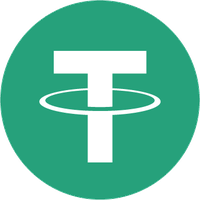Libra负责人大卫·马库斯:我们为什么要建立一个新的货币协议
本文作者为David Marcus。David Marcus作为Facebook区块链主管,Libra负责人。曾代替扎克伯格出席了美国参众两院针对Libra的听证会。
今日,David Marcus再次发文,以证明Libra的立场与推出数字货币的迫切性。
原文标题:“Why building a new protocol for money is the only way to truly change the game for people”(为什么建立一个新的货币协议是真正改变人们游戏方式的唯一途径)
在会见了世界各国的关键利益相关者后,在我看来,通过区块链传输数字货币的优势变得越来越明显——值得注意的是,在扩大准入和降低金融服务成本方面,其他人并不像我想象的那么明显。我经常被问到,为什么我们不采用一种更传统的方法,在现有的rails框架上构建一个支付系统,而不是问我们为什么要选择这种更有野心的方法。
As I’ve been traveling around the world meeting with key stakeholders, it became clear to me that the advantages of digital currency transmitted over a blockchain — notably when it comes to broadening access and lowering costs of financial services — weren’t as evident to others as I assumed they were. I’m often asked why we didn’t take a more traditional route of building a payment system on top of existing rails, instead of the more ambitious route we’ve chosen.
我试着找一篇关于新核心网络优点的简明扼要的文章,但是没有找到,所以我想尝试一下。
I tried to find a good concise write-up about the advantages of a new core network to move money around, and couldn’t find one, so I thought it would be a good idea to take a stab at it.
首先,让我们看看当前系统的局限性。现有的“货币网络”是封闭的,没有很好的相互联系。有区域支付网络(ACH、欧洲支付委员会…),银行间网络(SWIFT、RT1…),中央银行/银行网络等等。其中一些系统是在20世纪60年代和70年代建造的,虽然从那时起它们就得到了升级,但它们通常是基于遗留的、分散的基础设施之上的。
First, let’s look into the limitations of the current system. The existing “money networks” are closed and are not well interconnected. There are regional payment networks (ACH, European Payments Council,…), inter-bank networks (SWIFT, RT1, …), central banks/bank networks, and many more. Some of these systems were built in the 1960s and 70s, and while they’ve received upgrades since then, they often live on top of legacy, fragmented infrastructure.
其次,如果我们看看当前的支付服务和钱包,它们也有局限性。因为它们依赖于底层基础设施。
Second, if we look at current payment services and wallets, they also have limitations because of the underlying infrastructure that they are dependent on.
例如,虽然您可以在一个钱包中发送和接收金钱,但通常不能在不同公司的钱包之间发送和接收金钱。这些是竖井系统,反过来限制了这些网络的覆盖范围。打个有用的比方,这有点像你不能从Gmail发送电子邮件到Yahoo。由于没有支持互操作性的开放标准(即电子邮件的SMTP),因此只能在您自己的邮件系统上与人通信。
For example, while you can send and receive money from within one wallet, you typically cannot send and receive between wallets from different companies. These are siloed systems, which in turn limits the reach of each of these networks. To make a helpful analogy, it’s a bit like if you couldn’t send emails from Gmail to Yahoo! Mail, and were forced to communicate only with people on your own mail system because there was no open standard to support interoperability (aka SMTP for email).
第三,使用特定的钱包/银行账户将资金从一个国家的个人转移到另一个国家,需要的远不止表面上看到的东西。根据设置的不同,将资金从A点转移到B点需要许多中介机构参与,而且通常要求在B点随时可以获得流动性池,以便消费者及时取出资金。这意味着延迟,并在每一步中增加成本。
Third, moving value from one individual in one country using a specific wallet/bank account, to another requires much more than what meets the eye. Depending on the setup, moving money from point A to point B requires a number of intermediaries to be involved, and often demands liquidity pools to be readily available at point B for consumers to get their money out in a timely fashion. This means delays, and added cost at every step of the way.
现在,为了说明关键的区别,让我们想象这样一个世界:两个Libra协会成员希望构建在现有的rails框架上,并且希望在钱包之间构建互操作性层,会出现什么情况。
Now for the sake of illustrating key differences, let’s imagine a world where two Libra Association members would want to build on the existing rails, and would want to build an interoperability layer between wallets.
以Calibra钱包和Mercado Pago(拉美支付公司)钱包之间的事务流为例。
Take a transaction flow between the Calibra wallet and the Mercado Pago wallet.
这就是它在现有rails上的样子:A想从她的Calibra帐户上把100美元寄到B的Mercado Pago钱包上。A住在美国,B住在阿根廷。
This is what it would look like on existing rails. Alice wants to send $100 from her Calibra account to Bob on his Mercado Pago wallet. Alice lives in the US, Bob lives in Argentina.
如果A的Calibra钱包里有余额,她就开始付款。Calibra将不得不使用托管银行(或多家银行)来确保客户资金的安全。现在开始将这100美元从美国银行账户转移到Mercado Pago为其阿根廷客户使用的银行。这可能需要代理银行转账或中介机构。
Provided Alice has a balance in her Calibra wallet, she initiates the payment. Calibra would have to use a custodian bank (or multiple banks) to secure customer funds. Now begins the journey of moving that $100 from a US bank account to the bank that Mercado Pago uses for its Argentine customers. This might require correspondent bank transfers or intermediaries.
即使两家银行都在使用SWIFT,完成这笔交易的成本也可能在45至50美元之间。由于这些费用和复杂性,实现这一目标的正确方法是在Calibra和Mercado Pago之间达成一项净额结算协议,在某一段期间结束时,一个实体将余额净额结算给另一个实体。但这将意味着,希望参与该计划的各实体之间将达成一系列双边协议,流动性问题管理等昂贵的操作约束和需求,以及双方之间的高度信任,以避免实体在上述期限结束时未结算其余额。
Even in the case both banks are using SWIFT, it could cost about $45-$50 to complete that transaction. Because of these costs and complications, the right way to implement this would be to enter a net settlement deal between Calibra and Mercado Pago, whereby at the end of a given period one entity net settles the balance to the other entity. But this would mean a flurry of bilateral deals between each entity wanting to be part of this scheme, liquidity issues to manage among other costly operational constraints and requirements, and a high level of trust between the parties to avoid an entity not settling their balance at the end of said period.
简而言之,在现有的rails基础上,以及在封闭的支付网络上进行建设不会降低成本。即使为现有市场开放更多的创新,也不能降低获取现代金融服务的障碍。我们需要建设一个新的基础设施,以一个非常稳定、高质量的全球交换媒介作为支撑。
Long story short, building on top of existing rails and across disconnected payment networks won’t reduce cost, open up the market to more innovation, nor lower the barrier of access to modern financial services as much as building a new infrastructure with a very stable, high quality global medium of exchange supporting it.
与Libra的设计相比,Libra将使来自世界各地的钱包、商家和服务以令人难以置信的低成本转移价值。这将是一种近乎实时的结算方式,甚至不需要考虑世界各地银行随时准备的各种货币的流动性池。
Compare this to the design of the Libra project, that will enable wallets, merchants and services from all over the world to move value around at an incredibly low cost. There would be near real-time settlement, and no need to even think about liquidity pools of various currencies at the ready across banks around the world.
就像SMTP允许任何电子邮件提供商与其他电子邮件提供商进行互操作一样,Libra可以成为一种“协议”,使资金能够快速、廉价、稳定地在全球的服务提供商、机构和人员之间流动。这将通过消除对如此多中介机构的需求,以及操作复杂性和开销,从而增加创新和访问,从而大大降低成本。当人们想要发送和接收货币时,更容易就能从中受益,而获得现代数字货币和金融服务的障碍将大大降低——使数十亿人能够获得这些基本服务和世界经济。
Just like SMTP allowed any email provider to interoperate with other email providers, Libra can be the “protocol” that will enable fast, cheap, and stable money movement across service providers, institutions, and people all around the world. This would in turn massively reduce costs by eliminating the need for so many intermediaries, and operational complexity and overhead, thus increasing innovation and access. People would benefit from more ease when they want to send and receive money, and the barrier of access to modern digital money and financial services would be greatly lowered — enabling billions to have access to these essential services and to the world’s economy.
这就是为什么我们决定走一条更有野心的道路,也是为什么我们如此坚定地要坚持到底。因为全世界的人都应该得到更好的,是时候做出改变了。
This is why we’ve decided to take the more ambitious route, and why we’re so committed to seeing it through. Because people all around the world deserve better, and it’s about time for a change.
原文链接:
https://medium.com/@davidmarcus/why-building-a-new-protocol-for-money-is-the-only-way-to-truly-change-the-game-for-people-254c55407e22
编译:共享财经Neo
来源:共享财经
- 1下周必关注|BounceBit将上线主网并空投代币;LayerZero将公布官方女巫检查结果(5.13-5.19)
- 2第67期 | 产业区块链一周快讯速览
- 3MIIX Capital:日本加密市场全景报告
- 4欧洲“OpenAI”叒融资6亿刀,成立1年估值60亿刀,他们只做了一件事
- 5Ton生态风起,一文速览14个新一轮基金会Grant项目
- 6BounceBit主网已上线,推出节点质押和委托等多项新功能
- 7由川普对加密资产的支持引发的联想
- 8以太坊近期事件解析:香港加密ETF影响、美国ETH ETF前景、ETH是否会被认定为证券?
- 9特朗普“蹭”上加密圈:买4653美元NFT即可参与晚宴 相关MEME币飞涨

 币安网
币安网 欧易OKX
欧易OKX 火币全球站
火币全球站 抹茶
抹茶 芝麻开门
芝麻开门 库币
库币 Coinbase Pro
Coinbase Pro bitFlyer
bitFlyer BitMEX
BitMEX Bitstamp
Bitstamp BTC
BTC ETH
ETH USDT
USDT BNB
BNB SOL
SOL USDC
USDC XRP
XRP TON
TON DOGE
DOGE ADA
ADA